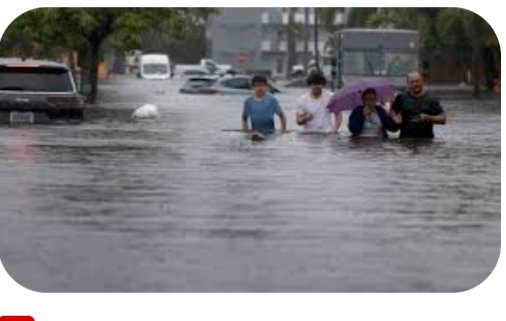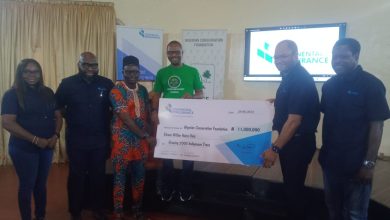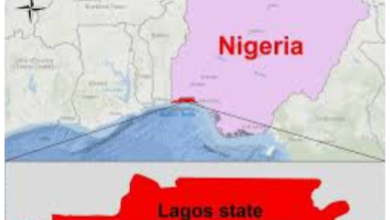NEMA, LASEMA partner on ways to curb flooding in Lagos

The National Emergency Management Agency (NEMA) and the Lagos State Emergency Management Agency ( LASEMA) held a stakeholders engagement to fashion ways of curbing the threats of flooding in Lagos .
The workshop held on Thursday at Ikeja saw the gathering of various stakeholders involved in emergency management in the state.
Speaking at the event, the Director-General of NEMA, Hajia Zubaida Umar said that the devastating impact of flood over the years especially that of 2012 and 2022 have served as a wakeup call to all tiers of government to collaborate with NEMA to manage disaster risks and associated hazards.
Represented by Mrs Ibitayo Adenike, Head of Operations, NEMA, Lagos Territorial Office, Umar said that in the recent past, lives have been lost, means of livelihood and infrastructure amounting to billions of Naira have been destroyed, due to unmitigated incidences of floods.
The D-G said that the rainfall and flood advisories contained in the Seasonal Climate Prediction (SCP) and Annual Flood Outlook (AFO) of the Nigerian Meteorological Agency and Nigeria Hydrological Services Agency (NIHSA) respectively, have provided us with valuable early warning alerts.
“Consequently, we are expected to take actions that will drastically reduce the adverse impact of flood on the entire landscape and the Nigerian population, especially for the most vulnerable persons living in communities identified to be at risk of flooding.
“NIHSA has specifically stated in the 2024 AFO that 31 States with 148 LGAs have been predicted to be within the high flood risk areas while 35 States including FCT with 249 LGAs are considered to fall within the moderate flood risk areas.
” The remaining 377 LGAs are forecasted for the low flood risk areas.These flood risk areas are presented with their degree of vulnerability to serve as a tool for government at all levels to develop risk reduction measures to avert disaster losses during this rainy season.
” Similarly, sectors of agriculture and food security, Water, Sanitation and Hygiene (WASH), education, health, transportation, protection and security amongst others are to set up mechanisms for disaster preparedness and risk reduction based on the early action strategies,” Umar said.
In his welcome address, the Permanent Secretary, LASEMA, Dr Olufemi Oke- Osanyintolu, said that flooding, in recent time has become a major unavoidable disaster in Lagos State.
Oke-Osanyintolu said that flooding has posed serious threats and damage to the livelihood and sustainability of most of the important settlements and communities in the state, coupled with the Year 2024 rainfall prediction by NIMET.
he said that relying on the strength of NiMET prediction it has become imperative to brainstorm on new ways to tackle flood and source practical technologies in flood prevention, which the State Government can embrace.
The permanent Secretary said that LASEMA has conducted Vulnerability and Risk Assessment of flood in every part of the state using integrated approach of Remote Sense Data and Geographic Information System for evaluation and mapping in its effort to mitigate the impact of flood disaster in Year 2024.
“This assessment is fundamental to mitigating flood by enabling the agency provide early warning, efficient and prompt planning, facilitate quick response and rehabilitation of affected victims in the State.
” It is on this note, that LASEMA is meeting with relevant stakeholders’ such as NEMA, Nigeria Hydrological Services Agency (NIHSA), Nigeria Meteorological Agency (NIMET), Red Cross Society, Lagos State Ministry of the Environment, Fire Service.
“Others stakeholders include the Office of Drainage, LASAMBUS, LASTMA, FRSC, RRS, Nigeria Army, Lagos State Neighbourhood Security Corps (LSNSC), Nigeria Security and Civil Defence Corps, Ministry of Local Community Affairs, LABSCA.
“Ministry of Physical Planning and Urban Development, LGSs/LCDAs, NGOs et al, in order to develop a Work Plan which will reduce the effects of flood on lives and properties in Lagos State,” Oke- Osanyintolu said.
The following LGAs which are under High and Moderate Flood Risk Areas include Badagry, Amuwo Odofin, Ikeja, Ojo, Ikorodu, Epe, Lagos Mainland, Lagos Island, Kosofe, Eti Osa, Apapa, Ibeju Lekki, Surulere, Shomolu, Ajeromi/Ifelodun, Agege, Mushin, Alimosho, Oshodi/Isolo and Ifako/Ijaye.
Discover more from Radio Nigeria Lagos
Subscribe to get the latest posts to your email.




